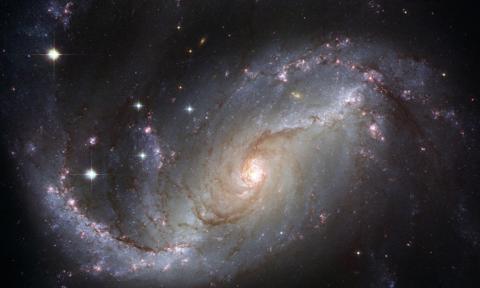
Aside from supermassive black holes and man-made debris that could potentially crash and wreak havoc on Earth, outer space also contains alcohol. Before you get excited, it’s only present in microscopic molecular form. So you can put your plans to chug cosmic beer on hold for now.
In a paper published in the Astronomers and Astrophysics journal, researchers claim that they’ve spotted the largest alcohol molecule in space yet in the form of propanol.
This has been discovered in what’s commonly known as the ‘delivery room’ of stars, the gigantic star-forming region called Sagittarius B2 (Sgr B2). This Sgr B2 area lies near the center of the Milky Way, neighbouring Sgr A*, the supermassive black hole that our galaxy is built around.
According to researchers, the propanol molecules here exist in two forms (or isomers): normal propanol, which has been detected for the first time in any star-forming region, and iso-propanol, the key ingredient in hand sanitisers which has never been seen in an interstellar form before this.
This discovery could potentially lead to a deeper understanding of how celestial bodies like comets and stars are formed.
“The detection of both isomers of propanol is uniquely powerful in determining the formation mechanism of each. Because they resemble each other so much, they behave physically in very similar ways, meaning that the two molecules should be present in the same places at the same times,” said astrochemist Rob Gerrod, from the University of Virginia, “The only open question is the exact amounts that are present—this makes their interstellar ratio far more precise than would be the case for other pairs of molecules. It also means that the chemical network can be tuned much more carefully to determine the mechanisms by which they form.”
The exciting discovery was made possible by the Atacama Large Millimeter/Submillimeter Array (ALMA) telescope from Chile. The 10-year-old telescope has allowed astronomers to identify molecules in outer space that weren’t visible before.
This is just the start of the continued investigation into the interstellar molecules present in Sgr B2 and to understand the chemicals that go behind the formation of a star.
- Quick links
- Space





